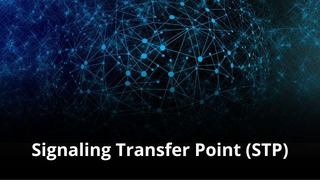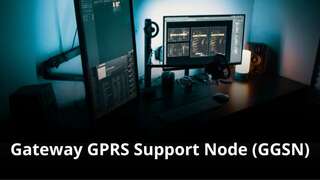Introduction about the Session Management Function (SMF)
The Session Management Function (SMF) is a critical and foundational component within the architecture of the 5G Core (5GC) network. Understanding its purpose is essential for comprehending how 5G networks manage the data session context, IP address allocation, and traffic routing policies for individual User Equipment (UE) connections. This entity acts as the central, authoritative controller for all session setup, modification, release, and quality of service (QoS) enforcement within a specific data session. You will find it crucial for any operator aiming to uphold flexible connectivity, granular policy control, and effective utilization of network slicing in their 5G environment.What are the details of a Session Management Function (SMF)?
- History and Evolution of the Session Management Function
- Core Utility and Functionality of the SMF
- Technical Integration and Data Model
- SMF Ownership for MVNOs and IoT Companies
- Organizational Impact of SMF Ownership?
- Redundancy and High Availability
- Impact of 6G, Policy Control, and Cloud-Native Architectures on the SMF
- Frequently Asked Questions about the UDR
- Summary
History and Evolution of the Session Management Function (SMF)
The concept of separating session control from mobility management began with the move to the 5G Core. In the 4G EPC, the functions of mobility and session management were partially combined in the MME and the P-GW (Packet Data Network Gateway). The Session Management Function (SMF) was introduced as a new, highly specialized control-plane node responsible solely for the data session lifecycle, a function that closely aligns with the P-GW’s control-plane role in 4G. This disaggregation is a cornerstone of the 5G Service-Based Architecture (SBA). The SMF’s original design focused predominantly on supporting Network Slicing, allowing a single UE to connect to multiple, simultaneous, and isolated data sessions (PDU Sessions), a capability critical for enabling diverse 5G services like eMBB and URLLC.
Core Utility and Functionality of the SMF
What is the SMF Used For?
The Session Management Function (SMF) is the definitive source for managing the control plane logic associated with the UE’s data sessions (PDU Sessions). Its primary purpose is to establish, modify, and release these sessions and to control the associated User Plane Function (UPF). It is crucial for allocating IP addresses, selecting the appropriate UPF path, and applying QoS policies and other traffic steering rules. Deploying an SMF is necessary to ensure every UE’s data connection is efficiently managed, adheres to its subscription profile, and correctly utilizes its assigned network slice.
Key Functions of the Session Management Function (SMF)
Lets investigate the core functions of the Session Management Function (SMF) to understand its critical role in 5G network operations:
- PDU Session Management: Manages the complete lifecycle of a Protocol Data Unit (PDU) Session, which is the 5G term for a data connection (setup, modification, release).
- IP Address Allocation: Assigns the appropriate IP address (IPv4, IPv6, or dual-stack) to the UE for its data session and manages the IP address pool.
- Subscription Data Interaction: Interacts with the Unified Data Management (UDM) function to retrieve subscriber-specific data session policies and access settings.
- Traffic Steering Policy Enforcement: Determines and enforces the rules for how different types of application traffic within a PDU Session are routed or treated (e.g., local breakout vs. centralized routing).
- QoS (Quality of Service) Management: Translates high-level policy rules into QoS Flow parameters and signaling to the AMF/gNodeB to ensure the data path meets performance requirements.
- UPF Selection, Association, and Control: Selects the optimal User Plane Function (UPF) to anchor the data session and instructs the UPF on how to route, forward, and apply policies to user traffic.
- Charging Data Control: Instructs the Charging Function (CHF) on charging methodologies (e.g., volume-based, time-based) and generates session-related charging information.
- Interworking with 4G/EPC: Coordinates with the PGW-C (Packet Data Network Gateway – Control) function to maintain session continuity during mobility between 4G and 5G networks.
- Network Slice Management: Stores and applies session policies specific to the Network Slice (S-NSSAI) the PDU Session belongs to, ensuring logical separation between slices.
Technical Integration and Data Model
The Session Management Function (SMF) is heavily integrated with the 5G Core’s Service-Based Architecture (SBA). Examine its key integration points:
- AMF (Access and Mobility Management Function): Interacts over the N11 interface (service-based, Nsmf) to initiate session setup and handle mobility events that impact the session.
- UPF (User Plane Function): Connects over the N4 interface to establish the user plane tunnel and configure the UPF’s packet processing and forwarding rules (using PFCP protocol).
- PCRF/PCF (Policy Control Function): Interacts over the N7 interface (service-based, Npcf) to receive dynamic and real-time policy and QoS rules for the session.
- UDM (Unified Data Management): Interacts over the N10 interface (service-based, Nudm) to retrieve subscription data relevant to session policies.

Technical Data Model and Key Interfaces
The SMF employs a structured Technical Data Model to store the context for every active PDU Session. This context includes the session’s IP address, the identity of the serving UPF, the assigned QoS Flow IDs, and the associated policies. Key interfaces utilized by the SMF are primarily based on the HTTP/2 protocol and the Service-Based Architecture (SBA), with one notable exception for the user plane:
- N4: The only non-SBA interface, using the Packet Forwarding Control Protocol (PFCP) for communication with the UPF to program the user plane data path.
- N11/N7/N10 (Service-Based Interfaces): SMF serves as a client/server to other 5GC Network Functions (AMF, PCF, UDM), communicating via the SBA using HTTP/2 over a Service Mesh.
SMF Ownership for MVNOs and IoT Companies
Why Own a SMF?
For an MVNO or an IoT company, owning a dedicated Session Management Function (SMF) (often a containerized or virtualized instance) is a highly strategic choice. The SMF dictates how data is treated and routed. Owning it allows these companies to gain significant control over PDU session policies, IP address allocation strategies, specialized traffic steering for localized services (edge computing), and granular QoS control for their subscribers. This level of session-specific control and flexibility is essential for deploying innovative services and maximizing the benefits of Network Slicing, which is impossible when fully relying on the host MNO’s SMF.
Advantages and Disadvantages of SMF Ownership
Direct Control over session policies, IP addressing, and PDU session parameters.
Localized UPF Selection enabling traffic steering to local/edge data centers for low-latency services.
Customized QoS Flows tailored to specific application needs (e.g., guaranteed bandwidth for enterprise traffic).
Rapid Service Deployment by defining new PDU Session types and policies independently of the host MNO.
Full Session Visibility enabling detailed traffic analysis and service assurance metrics.
High Initial Investment in specialized, high-availability, cloud-native platform infrastructure.
Operational Complexity requiring expertise in PFCP, session state management, and cloud-native scaling.
Maintenance and Upgrade Costs for a critical, evolving, 24/7 control system.
Interconnection Challenges with the host MNO’s AMF (N11) and UPF (N4) components.
State Management Complexity—managing the state of millions of concurrent sessions is technically demanding.
Organizational Impact of SMF Ownership
Analyzing the organizational impact of owning a Unified Data Repository (UDR) across various business units.
Operational Impact: Requires the establishment of a dedicated technical team proficient in PFCP, session state management, policy orchestration, and cloud-native scaling. This team will monitor session stability, manage UPF configurations, and handle all session setup/release troubleshooting. Recruitment of personnel specializing in 5GC session control is crucial.
Financial Impact: Evaluate the significant capital expenditure (CapEx) for the initial software licenses and the underlying cloud platform (e.g., hardware and cloud subscriptions). High ongoing operational expenditure (OpEx) will cover highly skilled staff salaries, database licensing, and continuous system monitoring due to the mission-critical nature of session control.
Commercial Impact: Leverage the SMF for highly flexible service differentiation based on QoS, latency, and routing. This supports the quick launch of tiered services and allows for superior control over the delivery of Network Slicing benefits.
Technical Impact: Mandates the implementation of detailed protocols for managing the PDU session context database integrity and ensuring accurate UPF programming. The company must own the end-to-end responsibility for system stability and ensuring correct interfacing with the AMF and the policy ecosystem.
Redundancy and High Availability

The Session Management Function (SMF) is a central control point that holds the context for all active data sessions; therefore, Redundancy and High Availability (HA) are absolutely critical requirements. Implement a fully redundant system architecture, typically achieved through SMF Clustering and high-availability databases orchestrated via a cloud platform. The SMF must be capable of quickly recovering session states through interaction with the UDM or by ensuring high reliability of its persistent session data storage. Rigorous state synchronization mechanisms must be in place to ensure that a backup SMF can instantly take over a session if the primary instance fails, minimizing session disruption.
Impact of 6G, Policy Control, and Cloud-Native Architectures on the SMF
SMF’s Transition
The SMF is a prime example of the 5G core’s architectural shift, having separated session control from mobility. Its function will remain essential in future networks. Its current evolution is focused on becoming even more dynamic, with tighter integration with the Policy Control Function (PCF) for real-time, application-aware policy enforcement.
6G, Policy Control, and Cloud-Native Architecture
In the 6G core, the SMF is expected to evolve into a highly distributed and flexible entity, potentially supporting new PDU Session types required for emerging technologies like holographic communication or advanced sensing. The SMF will become even more tightly integrated with the edge cloud and AI/ML to enable automated, instantaneous session parameter adjustments based on network conditions and service demands. The fundamental role of managing the data session lifecycle and programming the user plane will always remain necessary, but implemented with a focus on extreme automation and granular, software-defined control.
Frequently Asked Questions about the Session Management Function (SMF)
1. What is the main function of the SMF?
The primary function is to manage the lifecycle of a PDU Session (data connection), including IP address allocation, and to select and control the User Plane Function (UPF).
2. What is a PDU Session?
A Protocol Data Unit (PDU) Session is the 5G equivalent of an established data connection (like a 4G PDN connection), which can be of type IPv4, IPv6, or Ethernet.
3. What protocol is used to control the UPF?
The SMF uses the Packet Forwarding Control Protocol (PFCP) over the N4 interface to instruct the UPF on how to handle, route, and apply policies to user data traffic.
4. How does the SMF relate to Network Slicing?
The SMF is slice-specific. It applies the session rules and selects the UPF path associated with the Network Slice (S-NSSAI) that the PDU Session belongs to.
5. What 4G function is the SMF most similar to?
The SMF is most similar to the Control Plane portion of the 4G Packet Data Network Gateway (P-GW-C), as both manage IP allocation and session setup.
Summary
The Session Management Function (SMF) is the central, authoritative controller that manages the entire lifecycle of user data sessions, including IP allocation and UPF control, in the 5G Core (5GC). Acquiring and operating a dedicated SMF offers MVNOs and IoT companies significant advantages in policy control, traffic steering, and localized service delivery. However, this decision involves substantial complexity and requires specialized expertise in 5G signaling and cloud-native architecture. Its conceptual role—that of the master data session and policy controller—is fundamental to the future of mobile communication.







